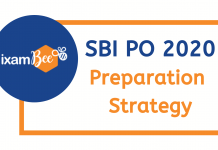Read about the Reserve Bank of India, its role and functions in the Indian economy. Also, learn how to prepare for the RBI Grade B interview.
The Reserve Bank of India (RBI) is the central banking institution of India, responsible for regulating and supervising the country’s monetary and financial systems. The role of RBI is crucial in maintaining financial stability, controlling inflation, and ensuring the overall economic development of the country. In this blog, we will try to understand the powers and functions of RBI, the origins of this great institution, and how it handles the Indian economy, safeguarding its citizens and giving them a secure fiscal future.

Brief History of the RBI
The Reserve Bank of India is an intrinsic element of the Indian financial system, and its history is inextricably linked to the country’s economic development. It was established on 1 April 1935 and constituted a direct outcome of the economic problems confronted by the country in the post-World War I period. The RBI Act of 1934 brought out the recommendations of the Hilton Young Commission, which brought out the need for a central banking institution. This act was quite historic in nature since India became the first British colony to get its central bank.
This bank was originally a privately owned shareholders’ bank. In 1935, it also assumed functions carried out by the Controller of Currency and those of the Imperial Bank of India. It was also the central bank for Burma and Pakistan until these countries achieved independence. In 1949, the Indian government nationalized the RBI to completely bring it under state ownership.
Ever since its inception, the RBI has been performing the role of a central bank in India and thus has come up with numerous invaluable contributions regarding the financial scenario of India throughout its lifetime. The RBI’s role in establishing institutions like the Deposit Insurance and Credit Guarantee Corporation and the Industrial Development Bank of India is vital. However, the priorities of the RBI changed over the years. It was in the 1990s that there occurred a landmark period of economic reforms, and the bank shifted its priorities to core central banking functions related to monetary policy formulation, banking regulation, and developing sound financial markets.
Even today, the roles and responsibilities of RBI are to strive towards economic development in India. Its rich history itself speaks for its adaptability and resilience against the rapid developments going on in the financial world.
Governance of the RBI
The RBI headquarters is in Mumbai, Maharashtra, and the current RBI Grade B Governor as of 2024 is Mr. Shaktikanta Das. The governor presides over the RBI headquarters. The overall affairs of the Reserve Bank of India are governed by the “Central Board”. This Central Board consists of Official Directors which include the Governor of the RBI along with no more than four Deputy Governors if needed. There is also a Non-Official Directors’ group within the Central Board of the RBI. This Non-Official Director’s group can consist of ten Directors from various fields plus two government officials and four Directors – one each from four local boards of the RBI. All members of the Central Board of the RBI are appointed by the Government of India. They are appointed for a period of 4 years, keeping with thE Reserve Bank of India Act.
Aside from the Central Board of Directors, the RBI also has four main Local Boards, with one Local Board in the Western Area, Eastern Area, Northern Area, and Southern Area each. Members of the Local Board are appointed for a term of 4 years and like members of the Central Board of Directors, they too are appointed by the Government of India. The Local Boards are responsible for providing counsel to the Central Board on regional issues. They also advocate for the interests of local cooperative and indigenous banks within their respective territories and economies. Additionally, they carry out other duties as assigned by the Central Board.
The Preamble of the Reserve Bank of India outlines the fundamental roles of the institution as follows:
“to regulate the issue of Bank notes and keeping of reserves with a view to securing monetary stability in India and generally to operate the currency and credit system of the country to its advantage; to have a modern monetary policy framework to meet the challenge of an increasingly complex economy, to maintain price stability while keeping in mind the objective of growth.”
Functions of RBI
The RBI is the highest monetary authority of the country and undertakes the duties of supervision and control of monetary and financial systems. Its prime objective is to maintain monetary stability and help accomplish economic growth with stability in the financial sector. Mentioned below are some key roles of RBI and its functions:
Management of Monetary Policy
One of the most prominent functions of RBI is to manage national monetary policy. The RBI has a Monetary Policy Committee that meets every two months to review the state of the economy and financial situations to decide on the benchmark interest rate, known as the repo rate. The MPC aims at attaining an inflation target of 4% with a +/- 2% tolerance band. It uses the repo rate, or the rate at which it lends to commercial banks, and the reverse repo rate, which is the rate at which it borrows from commercial banks, to conduct monetary policy aimed at influencing short-term interest rates and controlling inflation. By varying these rates, the RBI can raise or lower the cost for banks to borrow and hence modulate the credit availability and cost within the economy.
Issuing Currency
Issuance and management of currency notes is handled only by the RBI in India. The RBI designs and produces different denomination banknotes for meeting the demand for cash among citizens. It works closely with the Government of India owned Security Printing Corporation of India Limited and the Currency Note Press to ensure adequate notes supply. It also distributes currency notes to commercial banks and other recognized currency chests throughout the country, so that enough cash is available for any transaction. It also oversees that the currency in circulation is clean and genuine. The RBI also collaborates very closely with other law enforcement agencies to detect and prevent the circulation of counterfeit currency notes that may be used for illegal activities like money laundering or even terrorist financing.
Banker to the Government
Of all the roles of the RBI and its functions, one of the chiefest is to act as the banker of the Central and the State governments. The accounts of the central and state governments with the RBI are maintained, like the Consolidated Fund of India, Contingency Fund, Public Account, etc. It ensures smooth operation of the accounts and transferences from one to another. The RBI extends short-term loans to the central and state governments in the form of Ways and Means Advances (WMA) in order to enable them to tide over temporary mismatches between their receipts and payments. These advances are made at the repo rate and the governments avail these to manage their cash flow requirements. The RBI manages not only the central government’s public debt but also that of the state governments, pertaining to the issuance of new loans, servicing of the existing debt, and redemption of the maturing loans. It thus performs the role of a debt manager for the government and ensures that the government securities market works smoothly.
Banker to Banks
The RBI acts as a banker to commercial banks, therefore playing the role of a banker to these commercial banks, delivering vital banking services to smoothen the working of the banking system. Commercial banks keep current accounts with the RBI, taking the place of reserve accounts. These accounts help banks in managing liquidity and also help to meet some of the statutory requirements. In furtherance of this function, the RBI runs a clearinghouse whereby it helps banks settle inter-bank transactions quickly. This system makes interbank payments quicker, thereby reducing the possibility of default and enhancing liquidity. Besides, in times of financial distress, the RBI acts as a lender of last resort by providing emergency liquidity to such banks facing liquidity problems for the short term. Regulation and Supervision of Financial Institutions.
Regulation and Supervision of Financial Institutions
Another role of RBI is to regulate and supervise banks and NBFCs, undertake activities related to the stability and integrity of the financial system, and grant licenses to banks and NBFCs, ensuring that only fiscally sound institutions may remain in the market. It also prescribes prudential norms with regard to capital adequacy ratios, asset classification, and provisioning norms that would ensure the maintenance of adequate capital by banks to absorb potential losses and manage risks. The periodic inspection and audit of banks by the RBI help in assessing their financial health, regulatory compliance, and risk management practices. In the event of a bank’s non-compliance, the RBI is empowered to initiate correctives, including the imposition of penalties and even the withdrawal of licenses. Foreign Exchange Management.
Foreign Exchange Management
Among its many responsibilities, the role of managing India’s foreign exchange reserves is very important for the RBI. The RBI undertakes bullion operations, regulates the government security market, holds and manages the country’s foreign reserves, and stabilizes the rupee. The RBI intervenes in the foreign exchange market to curb excessive volatility in the rupee’s value. It buys or sells foreign currency to influence the rate of exchange or to maintain orderly market conditions. Under the Foreign Exchange Management Act, 1999, the RBI frames all policies pertaining to foreign exchange transactions. The working of these policies ensures adherence and smooth conducting of international trade and investment.
Consumer Protection
Another one of the functions of RBI is concerned with protecting consumers. The RBI is committed to consumer protection in the banking and financial sectors. It issues guidelines in regard to fair practices, transparency, and the redressing of customer complaints in banks. Further, it stipulates that banks must give clear information on their various products and services. Under the aegis of the RBI, a comprehensive grievance redressal framework has been laid down, wherein consumers could raise their complaints against banks and financial institutions. Of course, it monitors the redressal of the same for effective and timely treatment.
Besides all of the above functions it helps in the development of backward areas, maintaining economic growth and stability, promotion of credit to priority sections including rural and agriculture sectors, and promotion of export and industrial finance. Because of the highly important nature of work that RBI officers do in keeping the country financially secure, students from banking, finance and other such allied sectors aspire to join the ranks of RBI Officers in positions such as RBI Grade B Officers or other roles.
Being a Part of RBI
Those who wish to join the RBI and serve the nation through its many functions, can be part of the RBI through its several posts for RBI Grade B Officers. Interested candidates should be up to date with the latest RBI Grade B notifications for its vacancies, the RBI Grade B eligibility criteria for RBI, and the RBI Grade B exam pattern and syllabus to build a sound study plan that targets entry into the organization.
ixamBee is committed to helping students qualify for the RBI Grade B exam every year. ixamBee supports the RBI Grade B Study Plan and preparation strategy of aspiring candidates through its RBI Grade B Phase 1 and Phase 2 Online Coaching Course, mock tests, previous year papers, and even the RBI Grade B Interview Online Course. With our comprehensive suite of preparation materials for the RBI Grade B exam, you will not have to worry about getting study materials and practice questions.
To help you prepare 50% faster for competitive exams, ixamBee provides free Mock Test Series all the Current Affairs in English and Current Affairs in Hindi in the BeePedia capsules for GA Preparation. You can also get the latest updates for Bank PO, Bank Clerk, SSC, RBI NABARD and Other Government Jobs.
Also Read:
RBI Grade B Interview Questions & Experience: A Comprehensive Guide
A Complete Preparation Guide for RBI Grade B 2023
How to be calm and composed before your RBI Grade B exam?
займ на яндекс деньги без привязки картызайм без паспортных данныхцелевой займ















